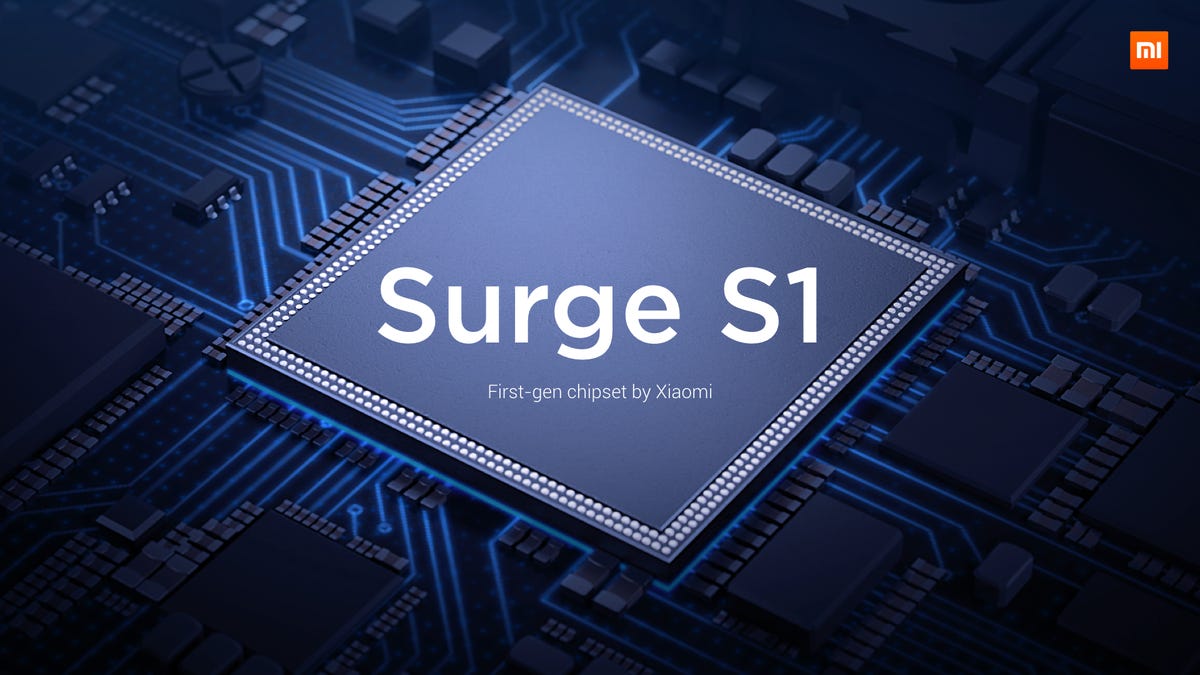Now Xiaomi's a chipmaker, too, for its very own phones
The expansion into chipmaking comes as the Chinese phone maker looks to get its groove back.

The new Surge S1 chip was designed in-house by Xiaomi.
Here's how serious Xiaomi is about its status as a phone maker: It's now building its own phone chips.
That puts it in a small but noteworthy group, along with phone titans Samsung and Apple and up-and-comer Huawei .
The new Surge S1 chip, designed in-house by Xiaomi, makes its debut in the midrange Xiaomi Mi 5C, a moderately priced phone that was unveiled Tuesday and hits the massive China market on Friday.
The expansion into chipmaking comes as Xiaomi has been trying to get its groove back. Following its meteoric rise to global prominence in 2015, the company has seen its shipments and market share slip around the world and at home in China. It's been undercut especially by Huawei and upstarts Oppo and Vivo, each of which, along with Apple, outsold it in China in 2016.
Xiaomi also has ambitions outside the phone market. Its ecosystem includes products such as smart lighting, cameras , air purifiers and even hoverboards.
Building its own chip could help Xiaomi cut product costs in the long run as well as intrigue customers who want something different.
It also means Xiaomi doesn't have to rely so heavily on outside chipmakers for supply, and gives it the ability to better optimize the software and hardware of its phones , a hallmark of Apple's tight control of how iPhones operate.
"On the surface, the Surge S1 could be a move to help Xiaomi reduce its dependency on suppliers like MediaTek and Qualcomm ," said Bryan Ma, vice president of client devices research at IDC. "What's more interesting to me, though, is how much deeper this could potentially go."
Ma cited not just potentially closer integration and optimization with MIUI, Xiaomi's custom spin on Android, but also the potential at some point to factor into the company's broader efforts in the internet of things, the notion of just about anything with a plug being connected online.
Surging into action
The octacore Surge S1 is made by Xiaomi subsidiary Pinecone Electronics and stems from a partnership with Chinese chipmaker Leadcore. Built on the 28-nanometer manufacturing process, it sports four high-performance 2.2GHz cores alongside four low-power 1.4GHz cores, and its GPU, the Mali T-860 MP4, is capable of 4K video playback.
Those specs put it on par with Qualcomm's Snapdragon 625 processor, found in phones like the Motorola Z Play.
The Xiaomi Mi 5C is the first phone to sport Xiaomi's own in-house chip.
In contrast with rumors ahead of the Tuesday announcement, Xiaomi didn't say anything about a flagship-grade chip comparable to Qualcomm's Snapdragon 835 or Huawei's Kirin 960. We'll have to see if anything materializes on that front later in the year when Xiaomi likely will unveil a new flagship phone.
Huawei has set an example for Xiaomi. Its work on the new Kirin 960 has resulted in blazing fast speeds and battery efficiency.
Xiaomi's 10-year plan calls for tighter integration of hardware and software development. That, Xiaomi CEO Lei Jun said in a statement, will help the company "make even better smartphones that will consistently surprise the industry and delight consumers."
While Xiaomi now has its own in-house chip, supply will likely still be an issue, so don't expect Xiaomi to drop its reliance on Qualcomm and MediaTek chips entirely. Even Samsung, which has its own silicon fabrication plants, still relies on Qualcomm's chips for some of its phones.
That said, for Xiaomi, the Surge S1 is a first step to being master of its own smartphone destiny.
Does the Mac still matter? Apple execs tell why the MacBook Pro was over four years in the making, and why we should care.
CNET Magazine: Check out a sampling of the stories you'll find in CNET's newsstand edition.

